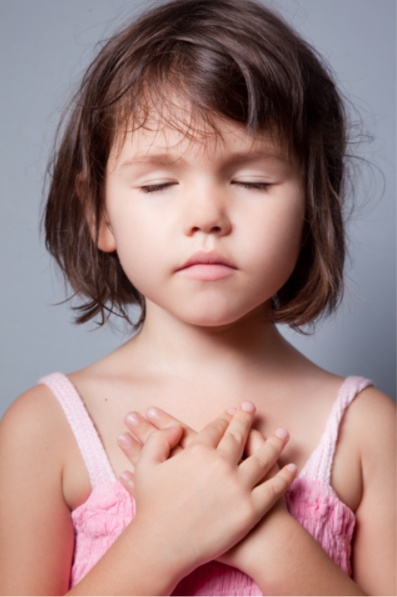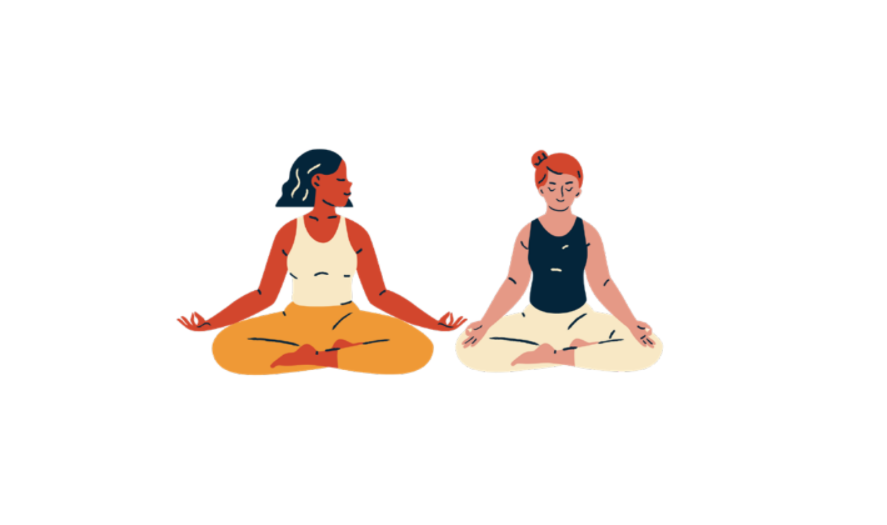3 Steps to Emotional-Regulation
Through Breathing
Using Breathing as the remedy for anxiety is not as simple as telling an anxious child to just breathe. During anxiety, blood flow is directed away from the digestive organs to the brain and muscles – getting the body ready to fight off the danger or run away. This can cause shaking, fidgeting in arms, hands and legs, and slowing of digestion, which can feel like butterflies, feeling sick. Deep, slow steady breathing will activate the relaxation response, communicating to the brain that they are safe, reversing the fight or flight response that can cause these physical symptoms.
Fear and anxiety comes from the part of the brain called the amygdala. It is the amygdala’s job to scan and alert the body to threats to safety and danger. I call it the worry watchdog. Sometimes worry watch dogs bark when there isn’t actually a real threat, just a perceived threat to safety, leading to a fight (aggression, arguing, defiance, opposition, resistance), flight (walking out, blocking ears, laughing, smirking, smiling) or freeze (shrinking, slumping, disconnecting, zoning out) response.
Once the amygdala senses danger, it activates a surge of stress hormones, the body then moves to short shallow breathing to conserve oxygen – breathing that stays in the chest. It doesn’t want strong steady breathing down to the belly and will resist this. Here are three steps to teach
emotional regulation through breathing.
PRACTICE
It’s likely you have practiced fire drills regularly at your school. Rather than children and teachers just being told the instructions of where to go and what to do, they physically practice where to walk, where to sit and experience the ordered chaos and upheaval. A fire drill is not just for health and safety purposes. It is creating a neural pathway to make the procedure more familiar and accessible during a real emergency.
That is the same with breathing techniques. Practicing during calm times will make it familiar, refine their technique and create strong neural pathways and make calming breathing more automatic and accessible during times of anxiety.
Is there a regular time this can be practiced when the children are less likely to be on high alert and feeling anxious already? Taking just a few minutes to practice breathing on a daily basis will help children be ready to use this technique when they are feeling anxious, worried or
nervous.
COREGULATION
A study was done on one-year old babies who were reunited with their mothers after she had experienced a stressful situation. Once the mother had left the stressful situation to reunite with their baby, the baby’s heart rate increased, appearing to align with the mother’s internal stress levels. This research shows the importance of bringing our calm to our students’ chaos. Take a moment to pause and slow
down your breathing. This will calm your nervous system which will help calm theirs. If you engage while you are in a heightened state of emotion, it will amplify and elevate their feelings of distress. Just as they are able to catch adults’ stress and anxiety, you are able to catch their anxiety. They are programmed to align to the atmosphere of the adults around them, so your calm breathing can help de-escalate their fight or flight response – they will catch your calm.
EFFECTIVE BELLY BREATHING TECHNIQUES
Here is a simple explanation and techniques that can be used in the classroom:
When our brain senses that we are in danger, it releases a surge of stress hormones, and our breathing changes to being short, fast and shallow. To help feel calm instead of worried, we need to slow down our breathing, making sure it is slow and deep, all the way down to our tummy.
Place one hand on your chest, and one hand on your tummy. Imagine you have sprinted really fast around the field. What is your breathing like? It should be fast, in the chest, almost like a panting dog. Get the children to observe that the hand on their chest moves up and down with this type of breathing, but the hand on their tummy doesn’t move as much. That’s what our breathing is like when we feel worried, afraid, excited or anxious.
Now imagine you are relaxed and calm, is that when you are falling asleep, having a story read to you or cuddling your favourite grown up? Your breath is slow and deep, in and out through your nose. Focus on what is moving. Your chest should stay still. As you take a breath that goes all the way down to your tummy, did you notice the hand on your tummy moves? Now breathe slowly out through your mouth. Try using your stomach muscles to push the air out. Repeat this again ten times.
Number 8 Breathing
Draw the number 8 with your finger. You can do this on your leg, on the palm of your other hand or on your desk. Remember – long, slow, deep breaths. Start drawing the number 8 from the middle. As you draw the top circle, breathe in. As you draw the bottom circle, breathe out.
Visual Breathing
Picture something that can help you focus on your long, slow, deep breathing. For example: Breathe in like you are smelling the flower and breathe out like you are blowing the petals off. Picture a cup of hot chocolate, or a piece of pizza. Breathe in like you are smelling how delicious it is, and breathe out like you are cooling it down.
Finger Breathing
Use your pointer finger to trace the outline of your fingers on the other hand. As you go up each finger, breathe in and as you trace down each finger, breathe out.
Extra Activities
Give children a range of items that they could use to come up with their own techniques to practice deep breathing and share their ideas with the class. Items such as bubble wands, balloons, straws, water with detergent, dandelions or feathers work great. You can even search YouTube for videos that teach children breathing techniques, with relaxing visuals and sounds. These can be played after lunch and morning breaks to get them ready to focus.

